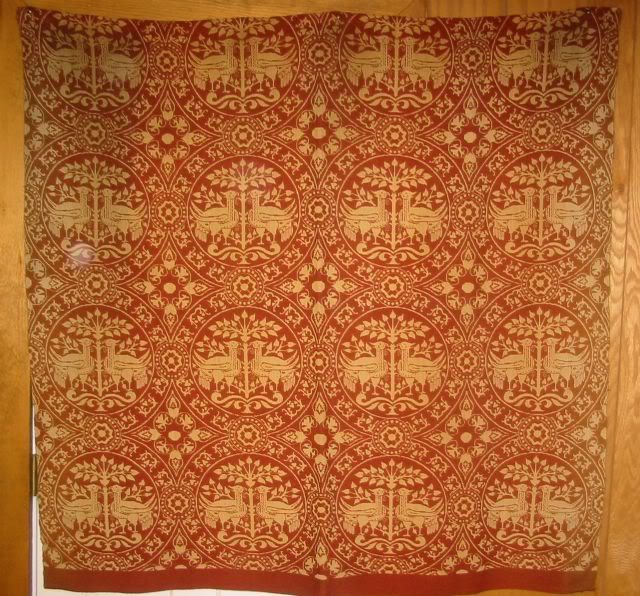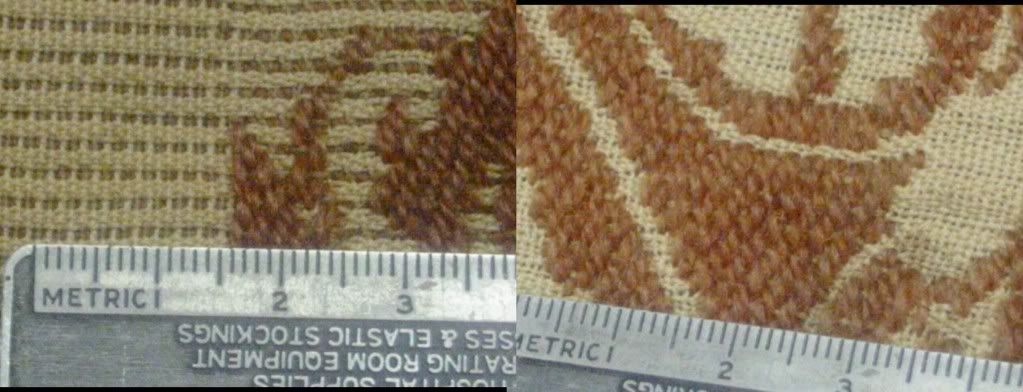Originally posted by JoeW
View Post
There has been some talk over whether its a curtain or wall hanging in the past but thats not important. I'm sure you could have ordered curtains or a tapestry in the pattern.
The DHW catalogs answer your question from the pictures contained within, if a weaving mill is mass prduced product then yes. Many pictures of linen, curtains, tapestries and so forth are shown.




 Actually I don't think its such the fraud you suggest. Those machines in the picture above are I'm sure more modern than the ones used in the 30's. I wouldn't look at that machine and assume its 1930's.
Actually I don't think its such the fraud you suggest. Those machines in the picture above are I'm sure more modern than the ones used in the 30's. I wouldn't look at that machine and assume its 1930's. I have a picture of the same tapestry design being made in some of my research so it was particularly interesting.
I have a picture of the same tapestry design being made in some of my research so it was particularly interesting.

 Thanks for clearing out the technical names. I had no idea what they were in English.
Thanks for clearing out the technical names. I had no idea what they were in English.
Comment